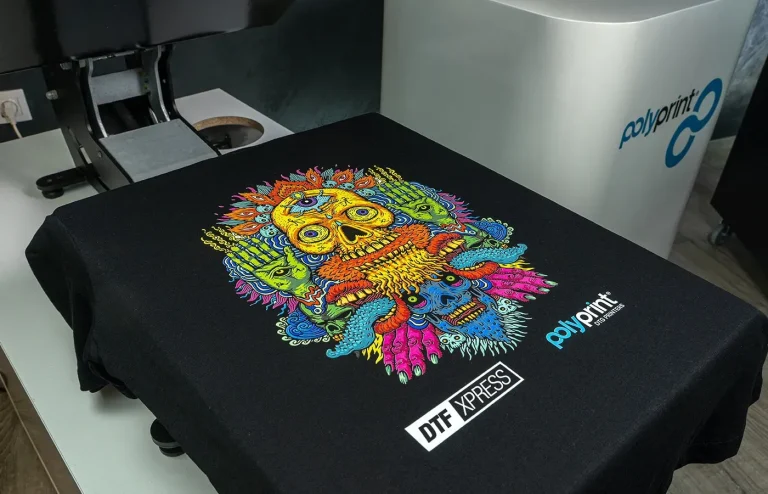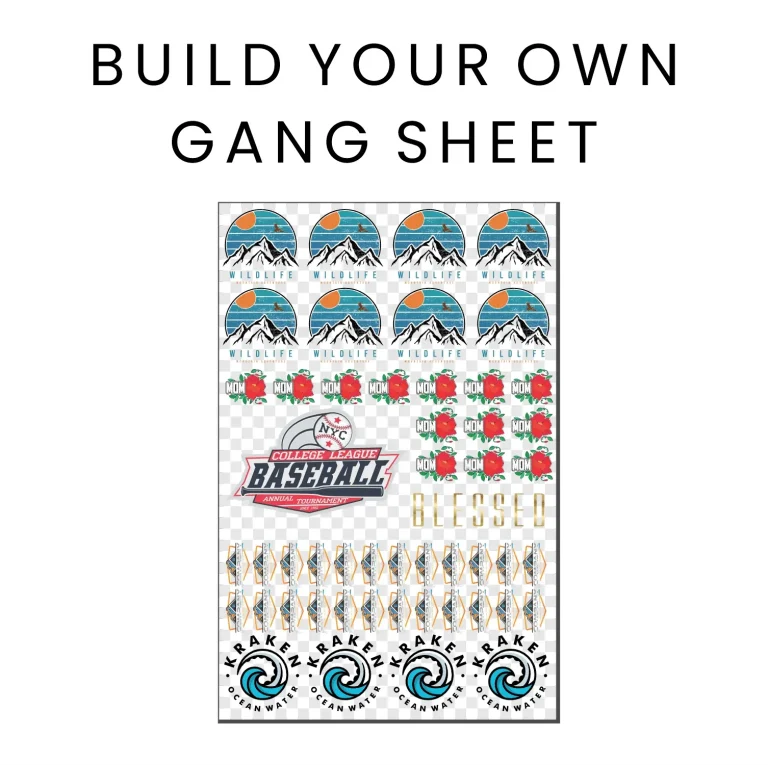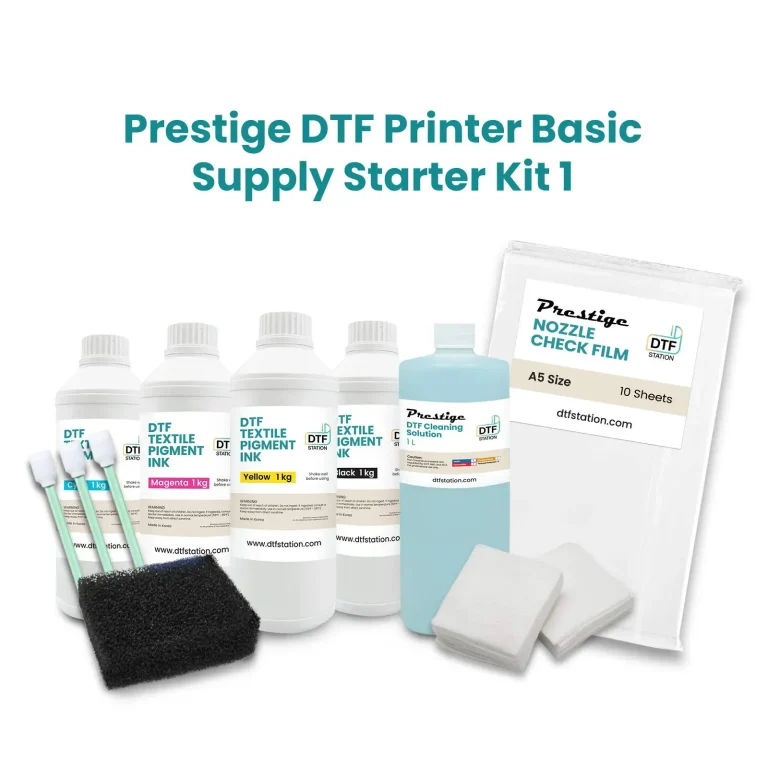DTF Supplies: The Ultimate Guide to Choosing the Best Materials
DTF Supplies have revolutionized the garment printing industry with their high-quality offerings and accessibility, making Direct-to-Film (DTF) printing a go-to choice for many. Selecting the right DTF supplies is crucial for ensuring that your printed designs maintain their vibrancy and durability. As you embark on your quest, understanding the best DTF films and innovative DTF adhesive powder can greatly enhance your print results. This guide aims to illuminate the key factors to consider when choosing DTF supplies, paving the way for successful and seamless printing experiences. Whether you are a seasoned professional or just starting, this comprehensive overview will help you make informed decisions in your DTF printing endeavors.
When exploring options for garment decoration, it’s essential to delve into the world of Direct-to-Film materials. DTF printing encompasses a unique process where designs are transferred onto fabrics using film and specialized powder for adhesion. Choosing the right resources, including top-notch DTF films and effective adhesive powder, can dramatically influence the outcome of your creations. This guide serves as your roadmap for understanding the necessary components and making informed selections for a stellar printing experience. As we navigate through various alternatives in DTF supplies, anticipate discovering insights that will empower your crafting skills.
Understanding the Essentials of DTF Printing Supplies
When venturing into the world of Direct-to-Film (DTF) printing, it’s crucial to understand the role each supply plays in creating high-quality prints. The success of your DTF projects hinges on selecting the right supplies tailored to your specific requirements. This includes evaluating the quality of DTF films, inks, and adhesive powders, all of which contribute to the final appearance and durability of your prints. It’s not just about picking up any supplies; a clear understanding of these components can transform your printing results and streamline the workflow.
Every DTF printer has unique needs based on the materials being used and the expected output. For example, high-quality DTF films are essential for vibrant color reproduction, while selecting the suitable ink ensures compatibility with your printer and film type. Likewise, the right adhesive powder strengthens the transfer, securing the print against wear and tear. By prioritizing these supplies, the overall aesthetics and longevity of your designs will significantly improve, fostering customer satisfaction and repeat business.
Choosing DTF Supplies: A Comprehensive Guide
Selecting the right DTF supplies involves a careful assessment of various factors that influence print quality. Begin by analyzing the DTF films available in the market, as they serve as the foundation for your prints. Opt for films known for their ink adhesion and transfer clarity. Additionally, consider the potential outcomes of different films from renowned brands, as they can provide insights into their respective performance and durability.
While evaluating DTF supplies, don’t overlook the critical roles of inks and adhesive powders. Each of these elements should complement the DTF films you choose. This compatibility ensures seamless transfers and vivid results. Take the time to do some trial runs with different supply combinations to identify what works best for your printing projects, thereby enhancing both efficiency and quality in your DTF printing endeavors.
The Impact of DTF Film Quality on Printing Success
The quality of DTF films is paramount in determining the clarity and vibrancy of your prints. High-grade films are designed to provide superior adhesion for the ink, minimizing issues such as fading or cracking after printing. Therefore, investing in well-reviewed brands can make a significant difference in the final product. Many professionals in the DTF printing community swear by films that offer a good balance between flexibility and strength.
Furthermore, the lifecycle of your prints can be greatly affected by the type of film selected. Films that are more resilient tend to withstand the rigors of washing and wearing, maintaining their colors and texture over time. As such, it is essential to balance cost with the quality of films—cutting corners at this stage can lead to increased costs down the line through returns and reprints.
Matching Inks with DTF Supplies for Optimal Results
Choosing the correct ink to pair with DTF films is crucial for achieving optimal print quality. DTF inks come in various formulations, and compatibility with your selected film is essential for effective ink adhesion. Always check the manufacturer’s recommendations to ensure your inks match the specifications of both your printer and the film, optimizing the printing process for the best results.
Water-based inks are often favored due to their eco-friendliness and superior bonding properties. They are particularly effective in DTF processes, providing a softer feel on fabrics while achieving vibrant colors. Testing different ink options before committing to larger quantities can help identify the best match for your DTF films, ensuring high-quality prints that stand the test of time.
Understanding Adhesive Powders: The Key to Strong Transfers
Adhesive powder is a fundamental element in the DTF printing process, acting as the binding agent that secures the print to the fabric. The application of high-quality adhesive powders ensures that prints can withstand everyday wear, making it an essential aspect of achieving a professional finish. It’s essential to select powders that melt evenly and bond effectively, avoiding issues that could lead to peeling or lifting after the transfer.
Different brands have distinctive adhesive properties, so research is vital. For example, popular options like Polymer and Crack and Peel have been praised for their consistent performance and ease of use. Understanding the characteristics of each powder helps ensure that you make a suitable choice, enhancing the overall success of your DTF printing endeavors.
Selecting Reliable DTF Suppliers for Quality Assurance
The reliability of suppliers plays a critical role in the quality of your DTF printing experience. Suppliers that specialize in DTF supplies often provide not only access to high-quality products but also valuable customer support. Look for suppliers with a solid reputation within the DTF community, as positive reviews can indicate their commitment to customer satisfaction and product reliability.
When assessing suppliers, consider their return policies and customer service responsiveness. A good return policy signals confidence in their products, while supportive customer service can assist you in resolving potential issues, ensuring your DTF printing ventures run smoothly. Engaging with supplier reviews in forums can also provide insights into the best suppliers in the industry, further guiding your purchasing decisions.
Frequently Asked Questions
What are some key factors to consider when choosing DTF supplies?
When choosing DTF supplies, it’s essential to focus on the quality of DTF films, the compatibility of DTF inks, the effectiveness of DTF adhesive powder, and printer specifications. High-quality DTF films ensure better adhesion and transfer clarity, while selecting the right ink compatible with your film guarantees optimal print results.
How can I determine the best DTF films for my printing needs?
The best DTF films are those that are recognized for their durability and vibrant color outputs. Look for reputable brands such as Avery Dennison, Mimaki, and Siser, and consider customer reviews to identify films that have excellent ink adhesion and minimal issues during the transfer process.
What type of ink should I use with my DTF supplies?
For DTF printing, it’s recommended to use water-based inks due to their eco-friendliness and superior adhesion properties. Ensure that the ink is compatible with both your printer and the chosen DTF film to achieve the best printing results.
Why is selecting quality DTF adhesive powder important?
Choosing quality DTF adhesive powder is crucial for ensuring that prints bond strongly to fabrics. A reliable adhesive powder will melt evenly and produce a soft-feel finish after the transfer, which adds to the durability and longevity of your prints.
What should I look for in a supplier of DTF supplies?
When selecting a supplier for DTF supplies, check for their reputation in terms of product reliability, customer service, and return policies. Reading customer testimonials and reviews can provide valuable insights into the supplier’s performance and trustworthiness.
How can I maximize cost-effectiveness when purchasing DTF supplies?
To maximize cost-effectiveness in your DTF supplies purchasing, compare prices across different suppliers, but prioritize quality over low prices. Invest in reliable brands that offer consistent performance to avoid potential long-term costs associated with lower-quality products.
| Key Considerations | Details |
|---|---|
| Quality of Film | Select high-quality DTF films to ensure excellent ink adhesion and vibrant colors. |
| Ink Selection | Choose compatible inks, preferably water-based, for optimal results and environmental benefits. |
| Adhesive Powder | Use reliable adhesive powders that melt evenly for strong and durable transfers. |
| Printer Compatibility | Ensure that the supplies are suitable for your specific printer model to maximize effectiveness. |
| Cost-Effectiveness | Balance quality with affordability by comparing options and avoiding subpar, cheaper supplies. |
| Reputation of Suppliers | Choose reliable suppliers with positive reviews to ensure quality and customer service. |
Summary
DTF Supplies are essential for anyone looking to achieve high-quality prints in the garment decoration industry. The art of Direct-to-Film printing hinges on selecting the right materials, including high-quality films, compatible inks, effective adhesive powders, and reliable printer options. Cost-effectiveness and supplier reputation also play significant roles in ensuring a smooth printing experience. By adhering to these key guidelines, you can enhance the vibrancy and durability of your prints, effectively meeting the growing demands of the market.






